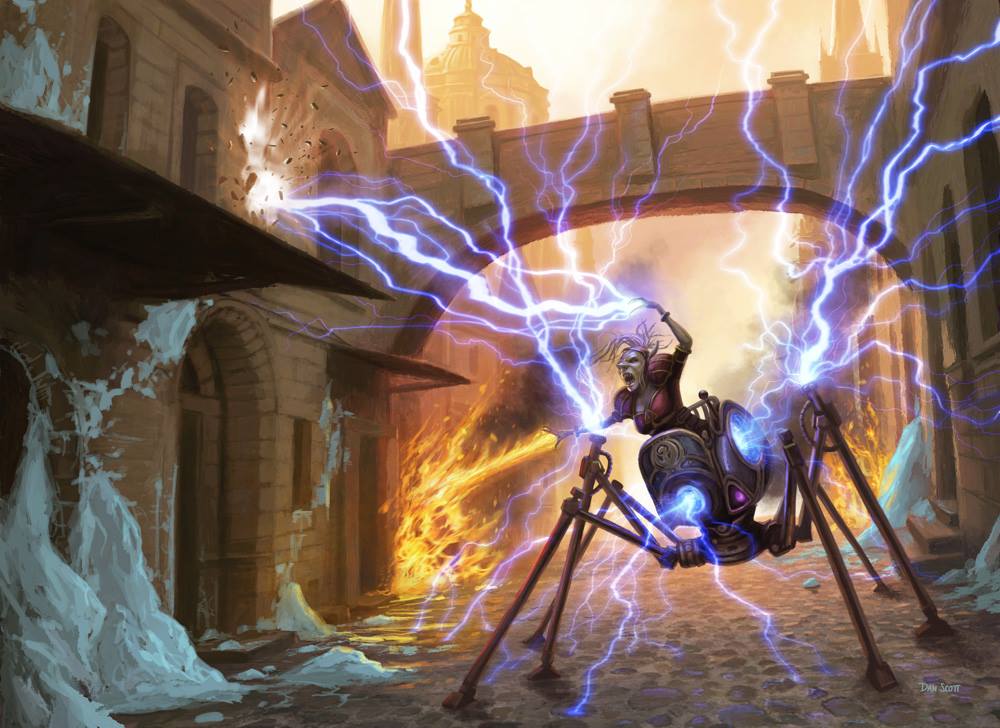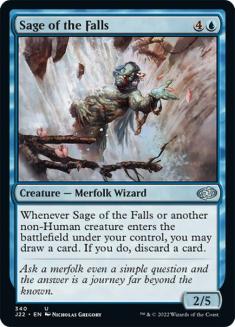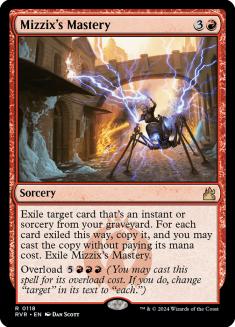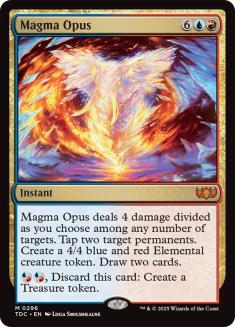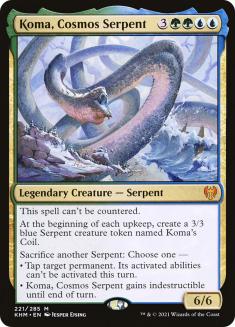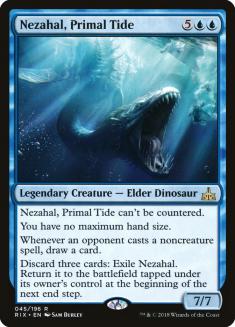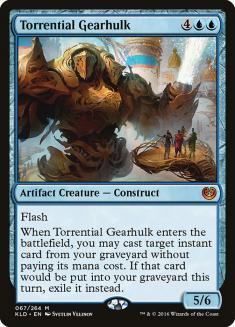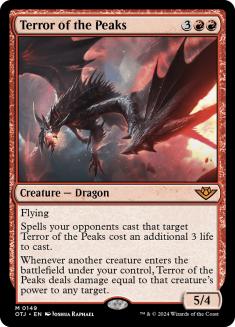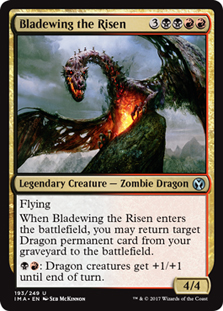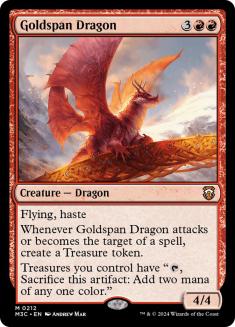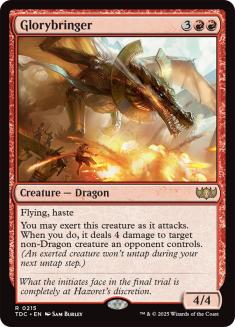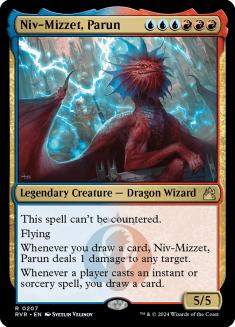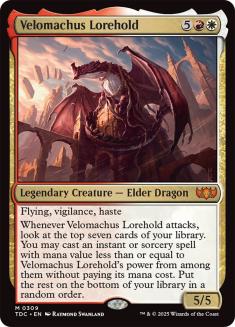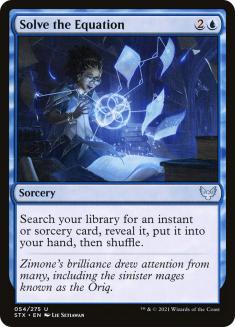Time Warp is the latest victim of the whack-a-mole approach to the Historic banned list. After the breakout performance of Jeskai Turns at the Strixhaven Championship and the general dominance of Steam Vents, it was clear change was coming. Players steeled themselves for the loss of Brainstorm, Mizzix’s Mastery, or… Time Warp?!
Time Warp was a confusing inclusion from the outset and was always on borrowed time. Nobody puts it in their deck with good intentions and a successful Time Warp combo effectively ends the opponent’s participation in the game while forcing them to stay in it because of the slight possibility of your non-deterministic combo chain fizzling. The Simic Turns decks failed to deliver and the first wave of Velomachus Lorehold decks that tried to cheat it onto the battlefield via Unburial Rites were excessively reliant on the graveyard, but the move to Indomitable Creativity yielded a sound strategy with unbeatable nut draws and no clear weakness.
The conspiracy theorist in me wonders how much deck naming conventions directly or indirectly influence these decisions. The round of bans that was meant to remove combo from Pioneer took out the Underworld Breach half of Lotus Breach but left Lotus Field itself and the rest of the deck intact. Similarly, the name ‘Jeskai Turns’ isolates an important part of the deck and distinguishes it from similar combo decks but distracts focus from what really matters. The base-Izzet Indomitable Creativity shell is still a powerhouse in Historic — it just has to find a new finisher:
Creatures (2)
Lands (26)
Spells (32)

Creatures (2)
Lands (26)
Spells (32)

Former Rivals League member and combo expert Matias Leveratto turned to an obscure two-card combo to fill this gap. When The Locust God and Sage of the Falls enter the battlefield via Indomitable Creativity, Sage of the Falls’s trigger draws a card, causing The Locust God to create a token, which makes Sage draw a card, and so on for a lethal swarm of hasty flyers. Each of these creatures is clunky enough that you wouldn’t attempt this combo in any other context, but Creativity bundles them together in one card at a good price to make this possible. Requiring two targets for Creativity is a problem and makes the Turn 4 Creativity kills impossible, but this package is so compact that you can fill out the slots you gained back with cards that can delay the game until you can safely cast a Creativity.
The Locust God is a resilient, powerful finisher by itself if you have enough time and works beautifully with Brainstorm. A partially successful Creativity — often when it targets a 1/1 Dwarf token from Dwarven Mine and a Treasure token but the Dwarf dies in response — that wins the flip by turning up The Locust God can be enough to win even without the prospect of an infinite combo.
Shark Typhoon was always a natural partner for Indomitable Creativity, but the Velomachus + Time Warp package took up enough slots that there was no room for a card that wasn’t strictly necessary, and a Creativity that targets a creature is much easier to interfere with. Shark Typhoon helps this combo with The Locust God in particular; you need the extra targets for Creativity now, your combo is somewhat fragile so the backup plan of protecting a large Shark is more important, and cycling for 1U lets you draw another card to start your combo again in response to a removal spell on Sage of the Falls or The Locust God.
It’s also the perfect complement to everything else going on. Jeskai Indomitable Creativity was able to beat Jeskai Control at its own game post-sideboard thanks to Commence the Endgame and Mystical Dispute, and Shark Typhoon gives you another instant-speed, uncounterable threat that can harass planeswalkers and let you pick a spot to force another threat through. In general, sideboard games against everyone are slower and more interactive, and the play pattern of Shark Typhoon is stronger there.
This deck has interest in Magma Opus by itself as a cheap enabler for Indomitable Creativity that’s surprisingly easy to hardcast to good effect in longer games. Once you’re there, Mizzix’s Mastery is an easy addition as a backup combo that doesn’t necessarily win the game by itself but buys enough time to set up the next wave. Overloading Mastery for a flurry of Magma Opus and Prismari Command is a nigh-unbeatable endgame against most decks and fear of this forces them to take more aggressive lines that make it harder for them to fight over Creativity. Losing Time Warp makes Mastery worse as a ‘fair’ card, but you’re likely to have other appealing targets like Anger of the Gods or Commence the Endgame post-sideboard against most opponents.
If you’d rather jam Creativity sooner without needing a second target, you can still do that:
Creatures (2)
Lands (26)
Spells (32)

Creatures (2)
Lands (26)
Spells (32)

Koma, Cosmos Serpent is a worthy payoff for Transmogrify or Lukka, Coppercoat Outcast in several formats and is poised to break into Historic. Koma dodges most common removal (conveniently being just the right size to survive Lightning Axe against Izzet Phoenix) and gets progressively harder to remove with each turn cycle. It works towards lethal damage as quickly as any alternative while locking down creatures that might circumvent it (notably a large flyer from Phoenix, a Shark token against other blue decks, or a loaded-up threat from Azorius / Orzhov Auras) or constricting the resources of other combo or control decks, preventing most realistic counterplay.
A contingent of Jeskai Indomitable Creativity players used Nezahal, Primal Tide to great effect at the Strixhaven Championship as a sideboard pivot that dominated games while bypassing interaction like Mystical Dispute or Memory Lapse. Koma shares that inevitability and having it as your Creativity payoff lets you use this tactic against blue decks in Game 1 and save sideboard space.
The Mizzix’s Mastery + Magma Opus combo also shows up in a less creative, more controlling shell:
Creatures (3)
Planeswalkers (6)
Lands (26)
Spells (25)
- 1 Wrath of God
- 4 Memory Lapse
- 4 Lightning Helix
- 1 Day of Judgment
- 2 Anger of the Gods
- 2 Mizzix's Mastery
- 1 Commit
- 1 Search for Azcanta
- 1 Seal Away
- 1 Dovin's Veto
- 3 Prismari Command
- 4 Magma Opus
Sideboard

Jeskai Control received a more subtle shot in the arm from the Mystical Archive than the other top decks in Historic. Lightning Helix and Memory Lapse are fantastic defensive cards that pair perfectly with Teferi, Hero of Dominaria. Narset, Parter of Veils was already a strong incentive to play control and now gets to prey on Brainstorm and Faithless Looting. Your own Brainstorms and Expressive Iterations give you more options for early card selection. Building your control deck around this tried and true formula will yield predictably solid results.
But where’s the fun in that?!
This combo-control take on Jeskai leans hard on Magma Opus to offer the familiar one-two punch with Mizzix’s Mastery and turn Torrential Gearhulk into the best control finisher one could ask for. Teferi, Hero of Dominaria and Shark Typhoon are more consistent and flexible, but Teferi is vulnerable if you’re already behind and Shark Typhoon is unreliable in the face of removal if it’s your only finisher. Even an average Torrential Gearhulk is harder to remove and is likely to stabilize the battlefield; Gearhulk into Opus is almost always a game-winning sequence.
Unfortunately, the results may speak for themselves here. After its initial success, this take on Jeskai Control has underperformed at high-level play compared to mainstream Jeskai Control. Realizing Gearhulk’s potential is difficult when the blue decks are a cut above the rest and the most popular card for blue mirrors is Mystical Dispute.
The better use for Mizzix’s Mastery may be the obvious one: fuelling an entire family of terrifying combo decks.
Creatures (5)
Lands (23)
Spells (32)

Has any deck in recent memory flopped this hard? This was the first demonstration of Mizzix’s Mastery’s incredible potential in Constructed and looked like it would immediately become the deck to beat in Strixhaven Historic. Instead, the format adapted remarkably quickly. Maindeck graveyard hate was everywhere overnight and the nightmare matchup in Dimir Rogues became the talk of the town thanks to Yuta Takahashi. The midrange creature deck of the format — typically the ideal matchup for combo decks like this — was Selesnya Company, where every creature from Archon of Emeria to Scavenging Ooze was highly problematic. As players discovered the real hits from the Mystical Archive like Tainted Pact, Five-Color Emergent Ultimatum was quickly forgotten.
The picture today looks totally different. The deck to beat is Izzet Phoenix which is not only slow and minimally disruptive but has pushed out Dimir Rogues, Selesnya Company, and other decks hostile to combo. Graveyard hate is much less popular, especially among players who recognize that it isn’t actually good against Izzet Phoenix. Other combo decks like Jeskai Indomitable Creativity that were just as fast but more interactive have been cut down to size.
Five-Color Emergent Ultimatum still has the most raw power of any strategy in Historic and its positioning looks better than ever. As Gerry argues in his primer, it’s easily kept in check but is always looming over the format waiting to strike when its competition isn’t showing enough respect.
MPL mad scientist and fan favourite Ken Yukuhiro showed up to the Strixhaven Championship with a very different Mizzix’s Mastery combo deck:
Creatures (5)
Lands (23)
Spells (32)

Casting Dragonstorm for its sticker price is almost impossible in Historic. Mizzix’s Mastery slashes that cost to a scarily attainable four mana and adds to the storm count as it ‘casts’ the copy. We want a pair of Dragons that can guarantee a win with the minimal Mastery into Dragonstorm for two; we can’t quite do that with the Historic card pool, but we can come close.
The first Dragonstorm copy finds Terror of the Peaks; the next two find copies of Bladewing the Risen, looping each other with the legend rule and their enters-the-battlefield triggers and dealing damage via Terror of the Peaks. If you already have a copy of either Dragon in the graveyard, Mastery for Dragonstorm by itself is lethal as one Bladewing trigger can return that one for free during this chain.
A possible sideboard pivot for this deck involves ‘fair’ Dragons that still make for appealing Dragonstorm targets while being realistic to cast in normal games. Niv-Mizzet, Parun stands out as a way to emulate the Koma / Nezahal play pattern against the blue decks that pose the biggest problem for Dragonstorm. Alternatively, Velomachus Lorehold can take the place of Scholar of the Lost Trove in Five-Color Emergent Ultimatum as the Unburial Rites target for that backup plan if you use that deck as a template.
The Dragonstorm kill takes up fewer slots than the Emergent Ultimatum package, leaving room for cards like Solve the Equation that bolster the combo’s consistency and give you outs to things like Scavenging Ooze in Game 1.
Yukuhiro’s most impressive find is Failure // Comply. Failure is excellent against an opposing Mizzix’s Mastery — permanently countering the copy of the spell while keeping the original in exile — and is fine as a delaying tactic for a combo deck that often just needs to buy a single turn, but Comply is the real hero. Against another linear deck built around a single card, Comply sets back their combo by at least a turn; in general, Comply can swing a race by blocking the card that threatens lethal (Embercleave against Gruul Aggro, for example) or the most relevant piece of disruption. Specifically, Comply is a unique and vital tool against Dovin’s Veto.
Comply also meshes well in the deck overall, as being castable from the graveyard helps to moderate the card disadvantage from Faithless Looting and Prismari Command or give you an extra reward with effects like Search for Azcanta, and having a one-mana spell on tap lets you build your storm count during your eventual combo turn.
Dragonstorm is curiously well-positioned in the Mystical Dispute battles that define Historic. Mizzix’s Mastery may be red, but copies of Magma Opus and Emergent Ultimatum get hit by a discounted Dispute, while Dragonstorm does not. Against other targets, the opponent can wait to counter the copied spell rather than Mastery itself, forcing you to find another copy of that spell as well as another Mastery; the Storm mechanic means they can’t afford to wait here.
If you’re more about the storm than the Dragons, there’s another fringe option:
Creatures (8)
Lands (17)
Spells (35)

Mind’s Desire is a notorious troublemaker in larger formats but hasn’t had the chance to put on a show in a while. Its potential in Historic is limited by the complete absence of fast mana; even something as mild as Pyretic Ritual is off-limits, and the seemingly random collections of cards in the Historic Anthologies have a suspiciously deliberate lack of these effects.
A Storm deck built under that constraint looks a lot different. Instead of using several spells to ramp into Mind’s Desire and just hoping to hit enough spells to keep going (with the occasional jackpot of a second Mind’s Desire), this deck’s Desires will start smaller but aim higher. Mind’s Desire, Magma Opus, Sea Gate Restoration (a convenient freeroll as a modal DFC), and Mizzix’s Mastery for any of these ensure that at least a quarter of the deck will be high-impact hits, giving you decent odds of making Desire worthwhile. Your combo turn isn’t all-or-nothing — you can hit Magma Opus to stabilize the battlefield while drawing many more cards and set up an even bigger turn later.
Mizzix’s Mastery is one of the most powerful cards left in the format and will get even stronger over time as splashy sorceries aimed at Commander find themselves used for mischief on the cheap in Historic instead. It’s likely it should have been banned over or alongside Time Warp, and possible it will be banned in the future; until then, use it to win a lot and win in style.

